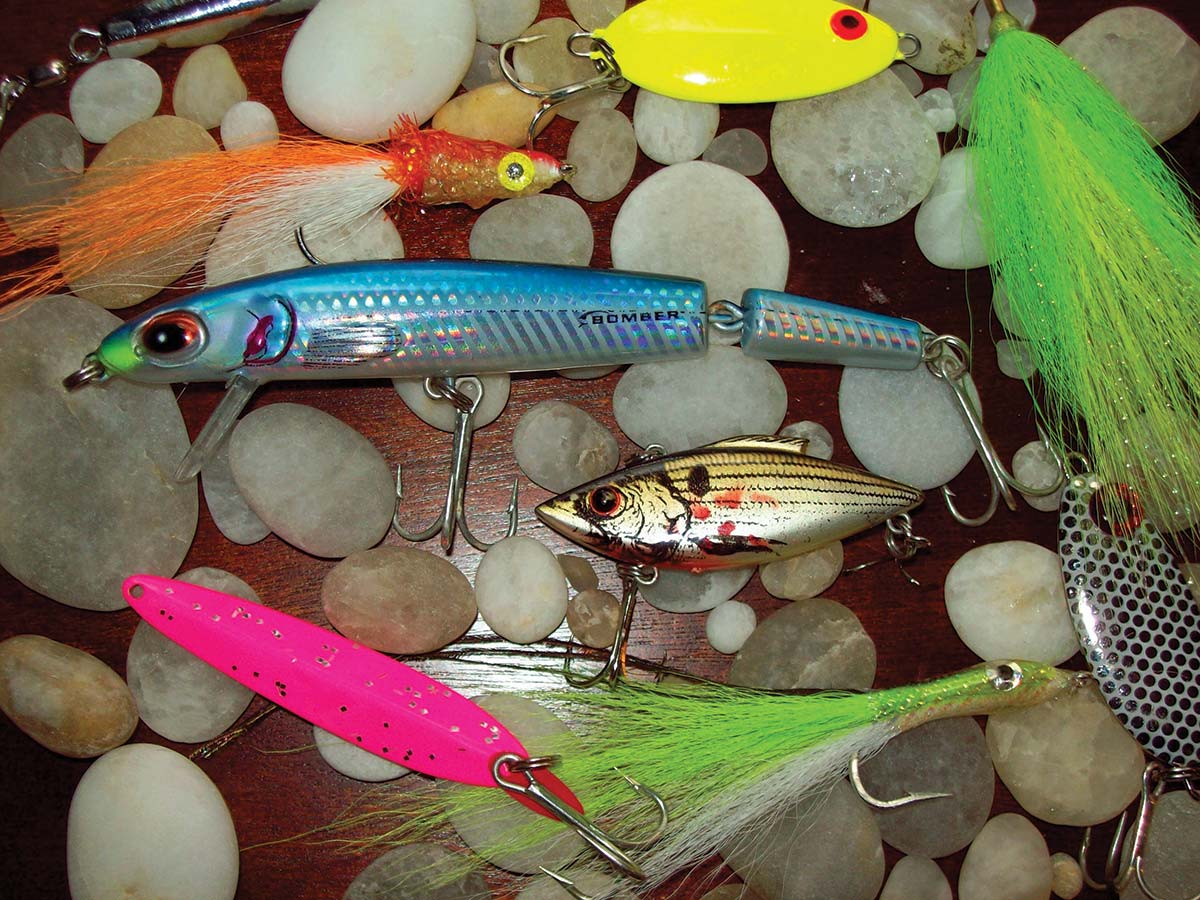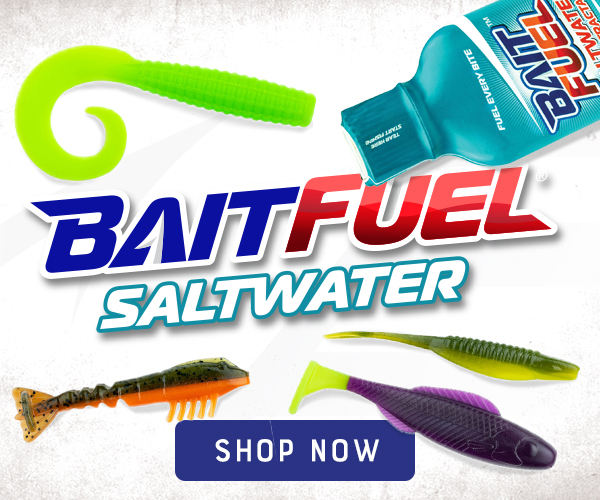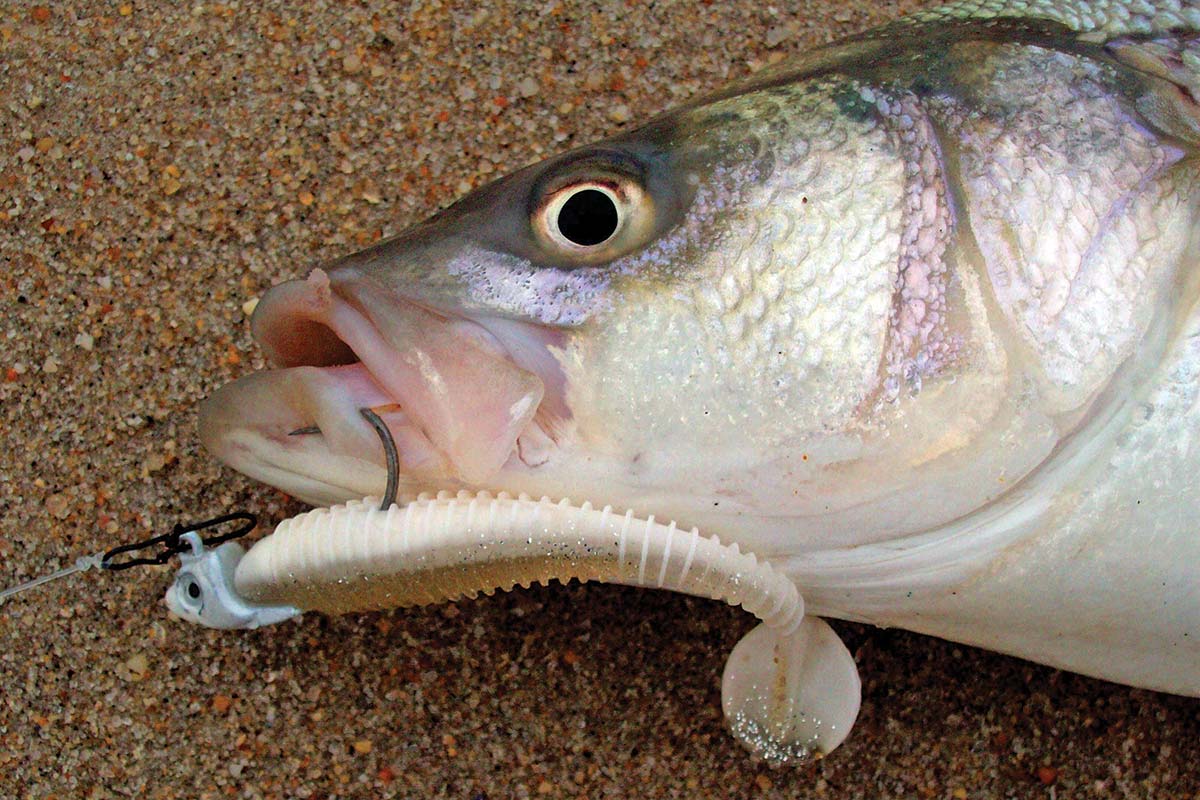
Planning your quiver in the dead of winter lets you hit the beach armed and ready come spring.
Fishing the surf can be both challenging and addictive, but it should always be fun.
So, what kind of gear is best? Sometimes using heavier equipment is the way to go when conditions and the targeted species call for it. However, I think most surfcasters would tell you that they prefer to go as light as possible with rods, reels, line, and lures when circumstances allow their use. Personally, using light gear is more sporting, puts less stress on my body, and results in more fun in hooking up and reeling in my catches.
First let’s establish a few basic ground rules for when light gear is most appropriate; the best time to bring your light equipment to the surf is during late spring, summertime, and early fall when smaller fish are in the mix and when surf conditions are right. This is when daytime fishing reigns and when casual clothing is enough to keep you comfortable from the elements. Always channel your gear to targeted species; light fishing is not right during the height of the migratory run when big bass and blues can overpower any equipment that does not have the heft and strength to handle them properly.
Using heavier tackle for surf fishing obviously does have its advantages, but so too does the use of light tackle; light tackle, not lightweight. Although heftier and longer surf rods may cast larger lures farther, light rods are exceptional for making shorter, more accurate casts with smaller, lighter lures. Some of the benefits of working the surf shallows with a light rod are that you can toss smaller plugs, allow for more precise short casts with lighter plastics, or helping transmit a more lively presentation action into your bucktails. Of course, lighter rods provide greater sensitivity to fish bites, and make catching any kind of fish exciting and fun.
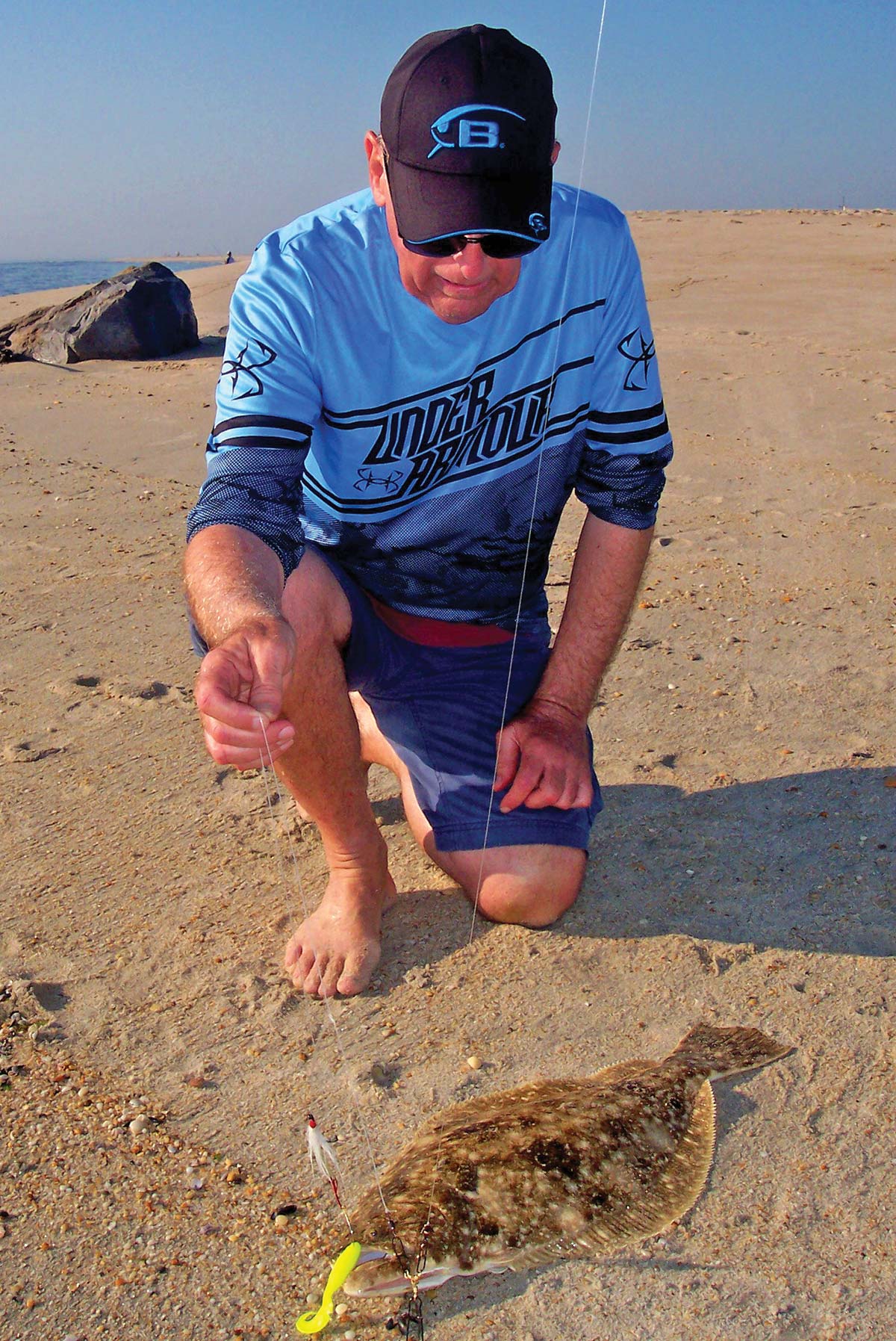
Choosing An Arsenal
Most of my light fishing rods are between 6 and 8 feet long; all are medium action; two of them are actually freshwater downriggers. One old classic rod that you can relate to is an Ugly Stik BWS 1100: an 8-foot, medium action rod. It is light, sturdy, and strong. Of course, Tsunami, St. Croix, Daiwa, Century, Shimano and most other rod makers market a plethora of light, medium action rods, each designed for light duty surf applications. They can all cast small lures well and are very strong.
| DREAMING OF SUMMER |
| Surf fishing light also refers to dressing lightly, adding to your personal comfort and enjoyment on a beach. While it might be hard to fathom now during the dead of winter, working the summer surf with just a t-shirt, hat, shorts, and bare feet is a sheer delight. I’ve always found that the more comfortable you are when fishing, the longer you will fish. Whenever you can fish with just light clothing and without waders is going to be a good day, whether or not you catch fish. |
You need to match any light rod with a downsized reel to create a balanced combo. My preference is a reel in the 3000 to 4000 range, like the Shimano Sahara 4000FB. These compact reels have small spools but they hold a good amount of thin diameter line. The rod and reel in each combo complement one another in enabling you to cast and work small, light lures – something that heavier combos are incapable of doing. This ability to match much smaller hatches is a tremendous asset to have in your presentation options.
Your fishing line is a vital part of your presentation package. Traditional monofilament no heavier than 10-pound test served me well for many years back in the day when I worked the surf with light gear. Light combos today get a lot of added power from new braided lines that are small in diameter but big on strength. High-tech braids are tailor-made for light surf fishing.
Using thinner diameter brand helps to maximize casting distance and delivers excellent sensitivity to any bites; an added plus is that they are exceptionally strong. This triad of light rods, reels, and line when added together make a formidable presentation package that can handle smaller targeted species but may be overmatched in challenging bigger striped bass and jumbo bluefish.
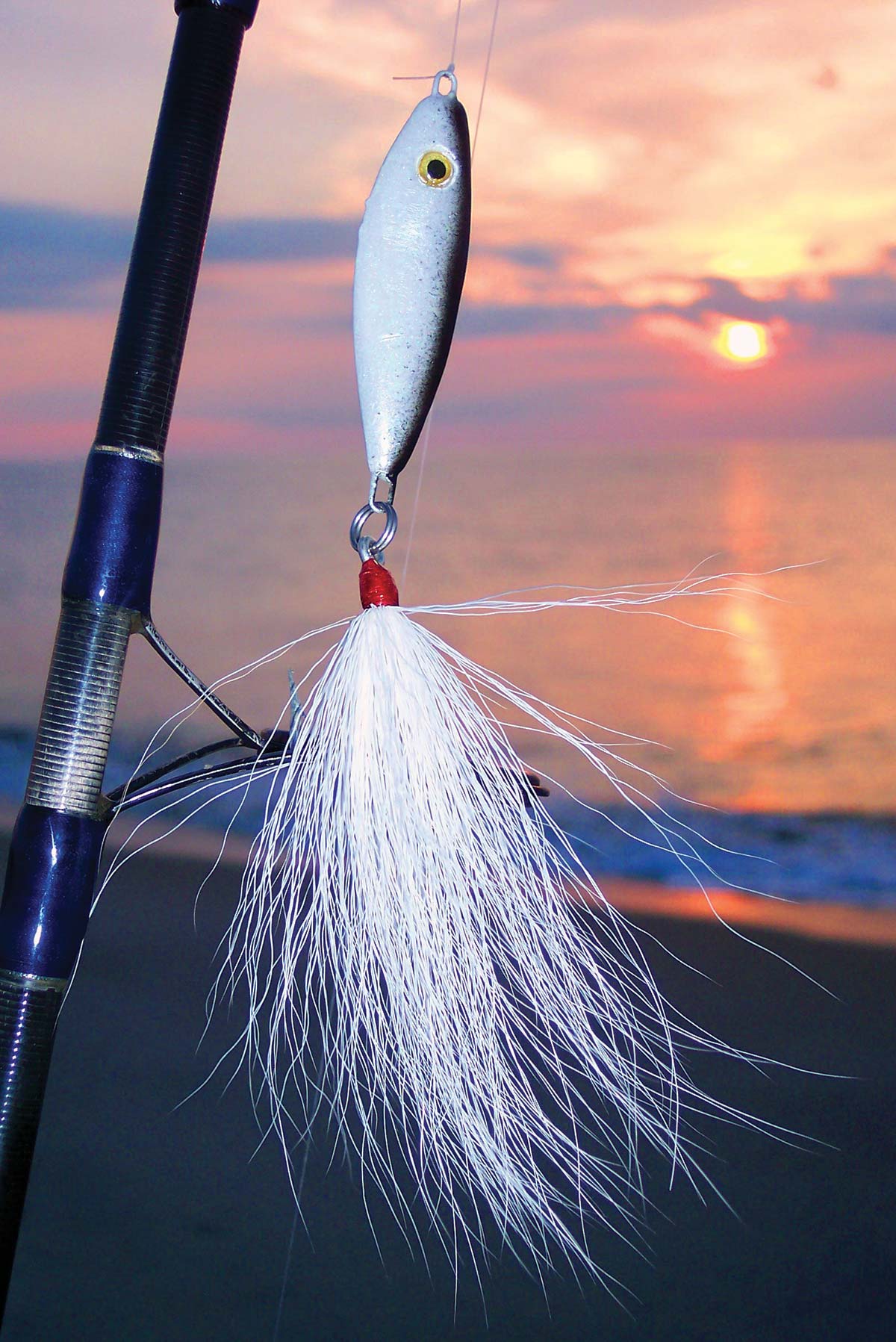
Match The Hatch
Small baitfish like bay anchovies, sand eels, and spearing dominate our local surf waters, and matching that hatch is often a high priority. Light surf combos and the lures that they present work wonders against small bluefish and striped bass, snapper blues, and scattered other species you’ll encounter in the surf from spring through fall. Small topwater poppers like the Storm Chug Bug models, swimming plugs like the smallest Bomber A-Salt, and tiny metals like the half-ounce and 3/4-ounce Luhr-Jensen Crippled Herrings appeal greatly to small blues and bass running through the summer surf.
And of course, light tackle tactics are most often used and are very successful when working the summer surf for fluke. Their ability to present small plastic lures like Gulp Swimming Mullet, bait strips like those from Fishbites, and even live bait like killies on rigs using very little sinker weight is extraordinary; their sensitivity to strikes is exceptional.
| ROD ACTION |
| One fishing rod often is not enough for surf fishing because different situations – whether the species targeted, the weather conditions encountered, the lures or bait rigs being presented, or countless other variables – dictate rods designed for those particular fishing applications. Rods may look alike but they almost always have unique performance traits. In fact, rod power and action are essential elements of your presentation and fighting package.
The action of a rod describes where it flexes both during the cast and on the retrieve; for example, a rod with an extra fast action flexes closest to the tip. As the action descends from extra fast to slow, the flex descends through the rod blank towards the butt. Select rods with actions that match the species that you are targeting and the lures you are throwing. |
Although most fluke are not renowned for their fighting ability, catching one on a light combo is exciting and fun. Magnify that if you hook up with a random bluefish or a striped bass. Actually, all small fish are fun to catch on light gear.
Fishing light involves some considerations and cautions. Going light is best when working lures, not with bait rigs, except perhaps when targeting fluke or kingfish. You need to factor ways into your presentations in regards to managing line, rod, and reel strength when fighting larger fish. Reel drag setting is crucial when using light gear: hooked fish cannot be manhandled in after they are hooked. It is advisable to use a fluorocarbon shock leader to protect your light line from sharp teeth and other abrasions. Know your equipment; accept its limitations.
Lite surf fishing enables you to use gear that makes fishing easier on your body; allows you to present small profile and lightweight lures effectively; provides extraordinary sensitivity; lets you travel with less gear and much more mobility, and most importantly makes catching anything exciting. There are different degrees of light fishing. Every surf angler who opts to fish light needs to determine how light they want to go, and the best way to incorporate it into their personal style of fishing. There is no one size fits all.
Lite surf angling is right, when conditions allow. There is no doubt that it certainly can add some excitement to your surf fishing through several months of every fishing season. It’s never too soon to begin thinking tactically of the season ahead; just remember, always channel your gear to targeted species.
